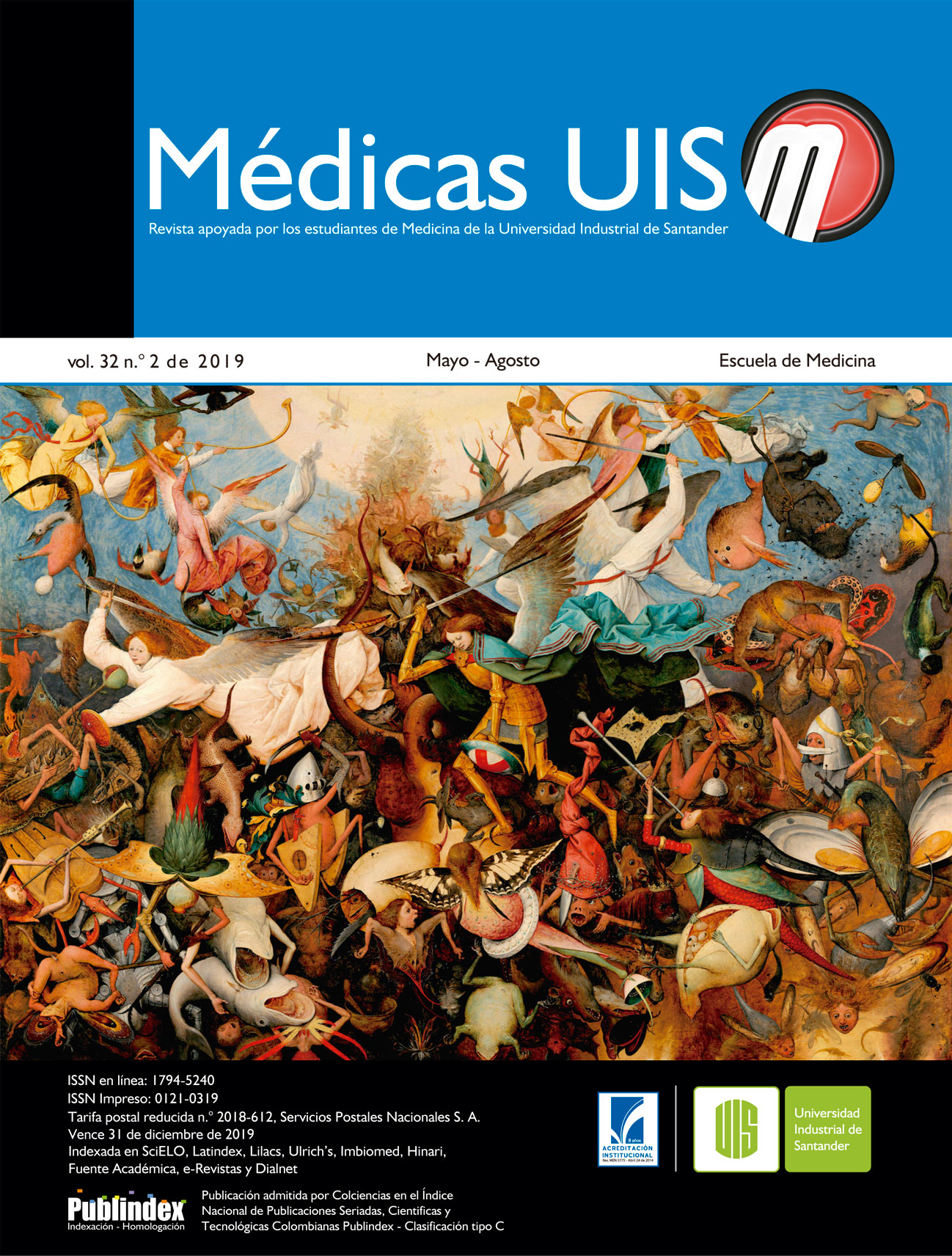Abstract
3M syndrome is very rare, it’s a heterogeneous autosomal recessive disorder named after 3 researches who described it for the first time, Miller, Mckusck and Malvaux. Whose main characteristic are; delayed prenatal growth, severe postnatal growth, facial dysmorphia, radiological abnormalities, presence of dolichocephaly, frontal bulging, triangular face, thick lips, raised eyebrows, severe maxillary hypoplasia, melancholic facies, delayed severe dental eruption, lack of facial mass growth. The objective of the article is the description of twin cases that come to the Advanced Dental Care Clinic of the University of Monterrey; 8 years 6 months old, with confirmation of the 3M syndrome, with a blood test at 4 years of age by the Genetics Service of the University Hospital. MÉD.UIS.2019;32(2): 59-65
References
2. Keskin M, Muratoglu N, Kurnaz E, Bayramoglu E, Savas S, Aycan Z, et al. A Rare Cause of Short Stature: 3M Syndrome in a Patient with Novel Mutation in OBSL 1 Gene. The Journal of Clinical
Research in Pediatric Endocrinology, 2017;1(9):91-94
3. Yan J, Yan F, Li Z, Sinnott B, Cappell K, Yu Y et al. The 3M Complex Maintains Microtubule and Genome Integrity. 2014;54(5):791-804..
4. Holder-Espinasse M, Irving M, Cormier-Daire V. Clinical utility gene card for: 3M syndrome. European Journal of Human Genetics. 2011;19(9). doi:10.1038/ejhg.2011.32.
5. Sasaki, K., Okamoto, N., Kosaki, K., Yorifuji, T., Shimokawa, O., Mishima, H., Yoshiura, K.-i. and Harada, N. (2011), Maternal uniparental isodisomy and heterodisomy on chromosome 6 ncompassing a CUL7 gene mutation causing 3M syndrome. Clinical Genetics, 80: 478–483. doi:10.1111/j.13990004.2010.01599.x
6. Hari Kumar M, Kumar Siva M, Kumar Siva V, Kumar Hari S. An adult with 3-M syndrome. BMJ Case Reports 2015; doi:10.1136/ bcr-2015-211429
7. Marshall, Christian R., et al. Whole-exome analysis of fetal autopsy tissue reveals a frameshift mutation in OBSL1, consistent with a diagnosis of 3-M Syndrome. BMC genomics 16.1 (2015): S12.
8. Tinanoff, Norman, Reisine, Susan. Update on early childhood caries since the surgeon general´s report. Academy Pediatric, 2019: 9 (6):396-403.
9. Rizzo Rubio L, Torres Cadavid A, Martinez Delgado C. Comparación de diferentes técnicas de cepillado para la higiene bucal. CES Odontologia, 2016: 29 (2): 52-64.
10. Madrigal D, Viteri EM, Romero MR, Colmenares MM, Suárez Á. Factores predisponentes para la inflamación gingival asociada con coronas de acero en dientes temporales en la población pediátrica. Revisión sistemática de la literatura. Rev Fac Odontol Univ Antioq 2014; 26(1): 152-163.
11. Contreras Rosales J, De la Cruz Cardoso D, Castillo Chaires I, Arteaga Mejía M. Dentífricos fluorurados: composición. Vertientes, Revista Especializada en Ciencias de la Salud, 17(2):114-119.12. Sandoval P, Bizcar B. Beneficios de la implementación de ortodoncia interceptiva en la clínica infantil. Int. J. Odontostomat., 7(2):253-265.

This work is licensed under a Creative Commons Attribution 4.0 International License.
Copyright (c) 2019 Médicas UIS
